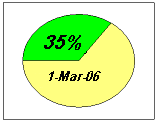PNOLA and BNOB ...
Join PNOLA on Saturday:
The Phoenix of New Orleans (PNOLA) will host its 1st Annual Community Rebuilding Day on April 1 between 9 am and 3 pm at the neutral ground located at the intersection of Canal and S. Galvez. The event will feature about 100 volunteers from LSU, plus many more from Tulane and Loyola University working with local residents of the Tulane-Gravier neighborhood. Participants with gut houses, paint, remove water marks and clear debris in this overlooked yet well-situated area that suffered between 4 and 5 feet of flooding.
From an Editorial in the Philadelphia Inquirer, “A controversial start:”
Rebuilding the city that Hurricane Katrina swallowed seven months ago is a complicated, emotional task. It touches on race, family and the pain of loss, on an economy drowned, a forthcoming election, government bumbling, and environmental frailty.
Yet out of this swirl came a smart plan from Nagin's Bring New Orleans Back Commission, written by the international planning and design firm of Wallace Roberts & Todd. The firm's Philadelphia office was deeply involved in the effort.
The report, presented in broad strokes, acknowledges that New Orleans will be a different city from what it was before the storm… Since the devastated lower Ninth Ward and some eastern city sections remain vulnerable to flooding, why not follow the plan's creative proposal to build parks there?
Yet that question is not easily answered. Divides of race and class have haunted this crisis from the moment New Orleans filled with water, with mainly poor African Americans left behind. Many African Americans fear a New Orleans built according to this plan's guidelines will be a gentrified New Orleans.
It's understandable that many residents of low-lying areas want to go back; to them, it's home. But rebuilding in areas so prone to flooding poses an unacceptable risk to lives and property. Indulging that urge is not a sign of respect; it is the opposite.
Instead of rebuilding the Big Easy as it was, mistakes and all, the reconstruction should be about creating viable neighborhoods that include affordable housing, including rentals. Building an extensive light rail public transportation system, as the report also recommends, would carry residents of all incomes to jobs.
Though Nagin's commission did a solid plan, he muddied matters last week by inviting residents to return and rebuild anywhere they choose. People who accept Nagin's politically motivated invitation may find, in some areas, that they are lonely pioneers.
The Phoenix of New Orleans (PNOLA) will host its 1st Annual Community Rebuilding Day on April 1 between 9 am and 3 pm at the neutral ground located at the intersection of Canal and S. Galvez. The event will feature about 100 volunteers from LSU, plus many more from Tulane and Loyola University working with local residents of the Tulane-Gravier neighborhood. Participants with gut houses, paint, remove water marks and clear debris in this overlooked yet well-situated area that suffered between 4 and 5 feet of flooding.
From an Editorial in the Philadelphia Inquirer, “A controversial start:”
Rebuilding the city that Hurricane Katrina swallowed seven months ago is a complicated, emotional task. It touches on race, family and the pain of loss, on an economy drowned, a forthcoming election, government bumbling, and environmental frailty.
Yet out of this swirl came a smart plan from Nagin's Bring New Orleans Back Commission, written by the international planning and design firm of Wallace Roberts & Todd. The firm's Philadelphia office was deeply involved in the effort.
The report, presented in broad strokes, acknowledges that New Orleans will be a different city from what it was before the storm… Since the devastated lower Ninth Ward and some eastern city sections remain vulnerable to flooding, why not follow the plan's creative proposal to build parks there?
Yet that question is not easily answered. Divides of race and class have haunted this crisis from the moment New Orleans filled with water, with mainly poor African Americans left behind. Many African Americans fear a New Orleans built according to this plan's guidelines will be a gentrified New Orleans.
It's understandable that many residents of low-lying areas want to go back; to them, it's home. But rebuilding in areas so prone to flooding poses an unacceptable risk to lives and property. Indulging that urge is not a sign of respect; it is the opposite.
Instead of rebuilding the Big Easy as it was, mistakes and all, the reconstruction should be about creating viable neighborhoods that include affordable housing, including rentals. Building an extensive light rail public transportation system, as the report also recommends, would carry residents of all incomes to jobs.
Though Nagin's commission did a solid plan, he muddied matters last week by inviting residents to return and rebuild anywhere they choose. People who accept Nagin's politically motivated invitation may find, in some areas, that they are lonely pioneers.





